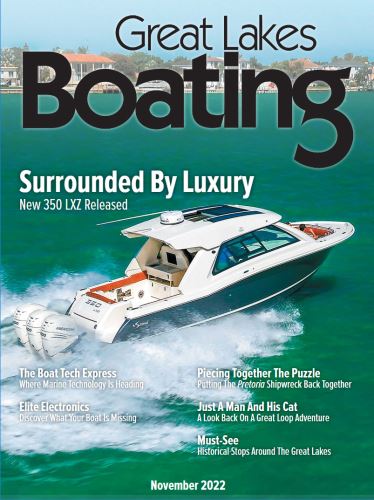.jpg_1600.jpg)
By the time Dan Scoville and Jim Kennard, avid shipwreck hobbyists, found the HMS Ontario—three years after they first started looking—they could not even grasp just how excited they were.
“It’s weird,” Scoville said. “I think we looked for it for so long that, at first, it was less climactic than we expected.”
The shipwreck-finding duo was the first to discover the only fully-intact British warship ever to be found in the Great Lakes. Originally sailing during the American Revolution, the aptly named HMS Ontario sank during a storm on October 31, 1780, on its way to Oswego, N.Y., in the waters of Lake Ontario. One hundred and thirty people were killed in the wreck, including British soldiers and American prisoners of war.
The boat’s age and history intrigued Scoville and Kennard and put the Ontario on their list of shipwrecks they wanted to find.
“The Ontario is the holy grail of Lake Ontario,” Scoville said. “It’s the most historic thing out there from an age standpoint. It’s the oldest shipwreck in Lake Ontario and had never been found before. There are not a whole lot of British warships sitting around on the bottom of Lake Ontario or any of the Great Lakes.”
The Journey Begins
Scoville and Kennard’s journey to uncovering the HMS Ontario started years before they actually found the ship.
Scoville grew up in the Rochester, N.Y., area for most of his life, which is what made him so interested in local shipwrecks.
“On the south shore, there weren’t really a lot of people that were actively searching. It was good hunting ground,” Scoville said.
Scoville and Kennard were not always partners. Kennard had done a lot of searching in the 70s but was only able to search in shallow water—150 feet or less—as he was not a deep-water diver. Kennard’s hobby wavered while busy raising a family, but he was ready to get back into it when his kids got older and started moving out of the house.
He was looking for a partner, so he went to the local diving shop. Kennard asked the owners if they knew any great divers, and they gave him Scoville’s name. As an avid diver, Scoville would frequent the shop regularly, and he just so happened to walk into the shop minutes later.
The two became fast friends. Scoville, a trained deep-diver, and Kennard, side-scan extraordinaire, teamed up and have knocked one shipwreck after another off of their list. “Prior to HMS Ontario, we found probably about 15 ships together,” Scoville said.
.jpg_1600.jpg)
The Process
How do you get started finding shipwrecks, you may ask? Scoville explains their process.
When choosing a shipwreck, Scoville digs up anything he can find on that ship: newspaper clippings, reports, etc. Through reading these sources, they try to figure out the wind and wave patterns to determine the location of where possible debris could be located.
“Then you put a dot on the lake where you think it might be, and then you put a box around that point on the map, and you draw a bunch of gridlines. Then you just—like mowing the lawn—go back and forth, back and forth,” Scoville explains. “I move over about 1,000 feet each path, and I usually do a path four or five miles long.”
Scoville and Kennard hop in their boat and drive these paths for hours going only about three miles an hour. In order to see what is below them, they use a side-scan sonar device that they lower about 150 feet below them which displays the underwater scene on a screen they watch on deck. They wait until they find something interesting enough to dive to or take a closer look at.
Since there were around 40 shipwrecks that had not been found on Lake Ontario, Scoville and Kennard would pick their favorite wrecks and go looking for them, but since it would take around three to four years to find the one they were searching for, they would bump into other shipwrecks along the journey.
Technological advances have come a long way, and GPS location has made keeping track of their searches a lot easier. Previous to GPS technology, searchers would use shore-sighting, a method used to keep track of location by lining up trees or other landmarks to their location. After that, Lowrance radio transmissioning improved accuracy but was still faulty. GPS allows Scoville and Kennard to get an almost pinpoint exact location, give or take a few feet.
Read Part Two here.

